‘Dancing is the natural state of a healthy person’. Dance teacher urges people to take classes and attend the Academic Ball
Linda Rozenbaha, RSU Public Relations Unit
Photos from RSU and Evitas Pavasare's private archive
Imagine a 14th century court – both staff and students from Rīga Stradiņš University (RSU) kick off the autumn season elegantly dressed for a ball. The ball is opened by the University’s Rector and his wife leading the polonaise. The night continues with the waltz and other ballroom dances accompanied by live orchestra music. This was one of the scenes about RSU that a then future, now current colleague painted for me before I started working at the University. Indeed, experiencing a real ball, ‘a celebration in an academically intelligent form, is a rare event these days’, says RSU dance teacher Evita Pavasare. She goes on: ‘This is one of our University’s unique traditions, something to be nurtured and cherished.’
In our conversation, Pavasare is keen to urge people to learn, or relearn, the classic dance steps in classes offered by the University before the ball. She speaks about the dress code, and shares a deep understanding of what dancing can unveil about and change in a person. She also shares how it felt to dance to rhythms from around the globe and the challenge of dancing non-stop for 24 hours!
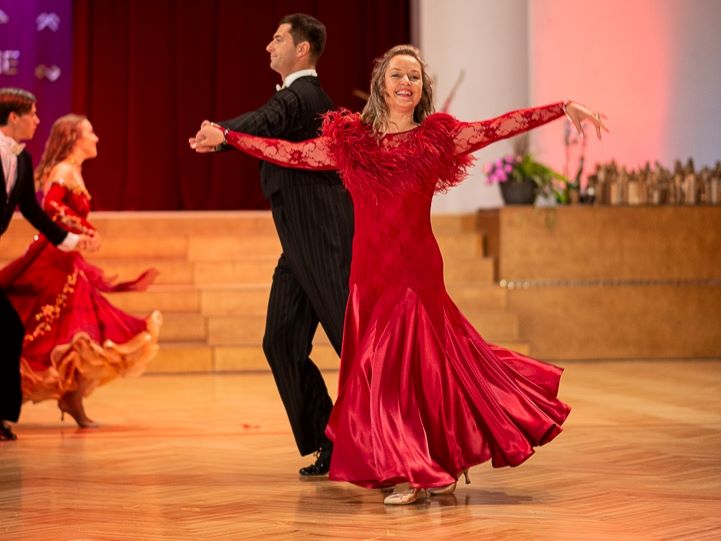
In August, RSU staff and students have the opportunity to attend dance classes and learn the polonaise, the opening dance of the Academic Ball. What else can one learn in these classes?
Every year, as the RSU Academic Ball approaches, I encourage everyone who will be attending (as well as anyone else who is interested) to learn how to dance. Classes will start already on Wednesday, 14 August at 20.00. They are meant both for those with and without any prior knowledge. It’s a new start! The ball is a unique event, and the ability to dance can allow us to enjoy it fully.

Before September, I will impart everything that I know. The polonaise is really easy! Of course, we’ll also learn how to waltz, foxtrot, we will dance a little cha-cha-cha, rumba, samba, salsa, and tango.
Do not hesitate or wait for the right moment – come and dance right now!
From then on, group classes will take place every Wednesday throughout the study year. I also give private lessons.
Are your classes meant for couples or people come alone?
The most important thing for everyone who wishes to start or continue dancing is to simply show up. We have both couples and solo dancers attending classes. You can learn the steps either way. I invite everyone at RSU to attend the classes – both staff and students. You can come with your partner or without. I encourage those without a dance partner to come anyway. People are reluctant to come and dance alone, but being scared of a problem will not get you anywhere. So, you have to start dancing, and recommend the dance classes to your colleagues and students.
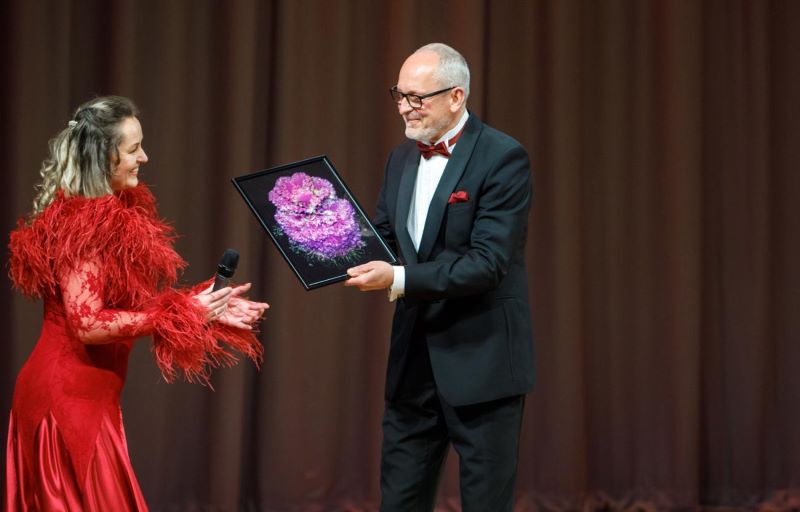
The management at RSU has been fond of dancing for years, attending classes on a regular basis and inspiring their colleagues. I especially urge students to come – this is your investment in a well-rounded education.
I presume that the readers are dancers of various levels, also beginners, and that some might need additional encouragement. Maybe you know a story about someone who “has two left feet”, so to speak, but who at some point managed to put their “right foot forward” and become good at it?
This can actually happen very fast! All you have to do, is to come to the ballroom, meet me, and I’ll take care of the rest.
With a tap of my wand, everyone realises they have a passion for dance in them.
And then all you need is discipline, to follow a routine – attending classes is a must. Your health improves once you start dancing. It boosts your self-confidence. We are all born with the skills required for dancing. Dancing is the natural state of a healthy person! I would really like for it to become a proper subject taught in schools, just like maths or Latvian. And ballroom dancing specifically, not just folk dancing. Ballroom dancing mixes temperaments from all over the world.
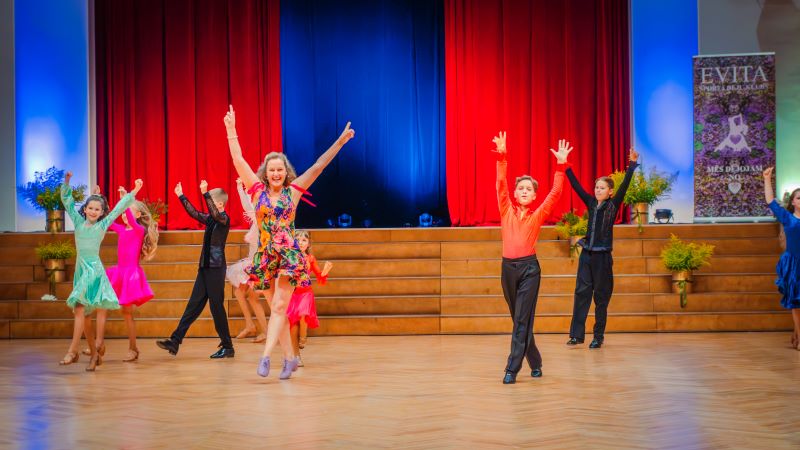
How long have you been helping us, at RSU, to improve on the dance floor?
It all started in 2008, when Prof. Jānis Gardovskis became rector. He and his wonderful spouse, Prof. Dace Gardovska, asked me to give them a private lesson in the polonaise. It resulted in a synergy that has evolved into a profound respect and love over the years. Also the new rector, Prof. Aigars Pētersons, is passionate about dancing. I am happy that people like this set a wonderful example for the University and society.
Dancing is a truly broad field that helps nurture a deep intelligence.
I think that learning how to dance at university contributes to its status, because intelligence is not just the theoretical knowledge we acquire. For six years, RSU had an Intelligence Academy and one of the basic skills it taught was dance. Prof. Gardovskis, who was the rector at the time, initiated the project together with his wife, the Alumni Association, and the Teterev Foundation.
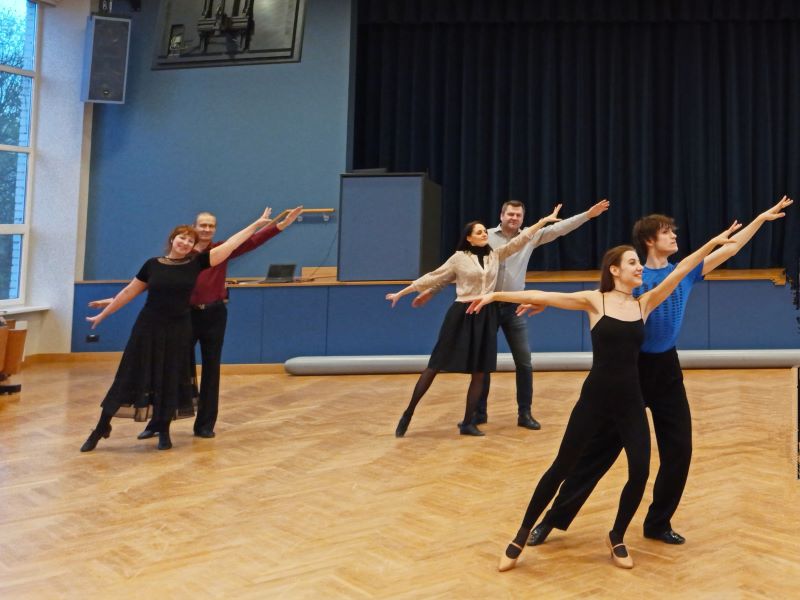
Before I started working for RSU, my soon-to-be colleagues described the academic ball as being like something from a 14th century royal court at my job interview.
Indeed, academic balls like this are rare. We arrive in formal ball gowns that creates a special atmosphere. Accompanied by the appropriate surroundings, music, serene conversations...
Maybe you can remind us of what the appropriate dress code for a ball is?
We attend the ball in the dress code black tie, or dark suit. For a men, this means a black or a dark blue suit, a tuxedo, or a tailcoat paired with dress shoes. For women, this entails a long evening gown, or a dress with the shortest permissible length being 15 centimetres below the knee.
The ball takes place at the end of the summer, it is hot, so if you have an off-the-shoulder dress, you will need a scarf for the formal part and afterwards you can go with bare shoulders.
Women can wear different types of shoes to the ball: closed-toe ballroom shoes or pumps with a heel that does not exceed 7 cm. You can also wear Latin American open-toe dance shoes (with a leather sole), but for classical dances, especially if the couple has not had the chance to adapt to each other yet, these may not be the safest option as you can stub your toes. I definitely do not recommend shoes with a high, stiletto-like heel.
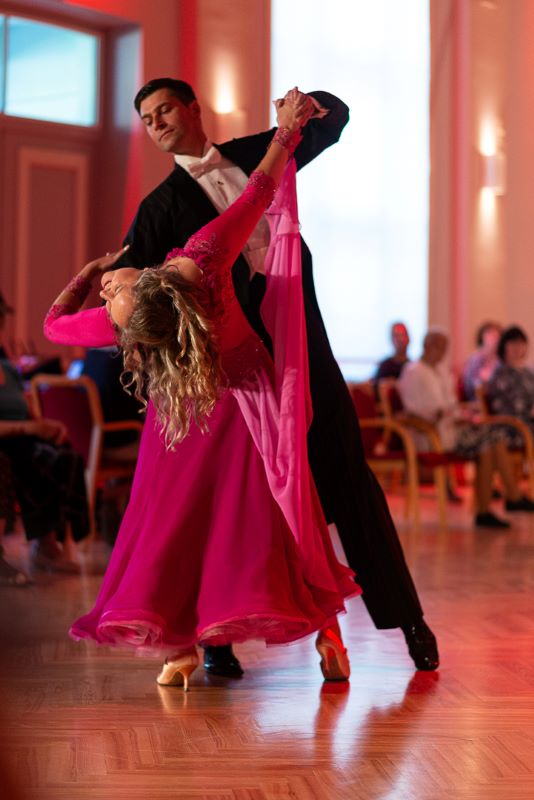
The polonaise opens the ball. I initiate the dance rounds, and the orchestra selects music suitable for the character of each particular dance. It is wonderful that the length of music is observed – each piece is up to three minutes. The polonaise is followed by the Viennese waltz with a medium-fast tempo, so that all the everyone doing the polonaise can continue to dance. Of course, it gets rather crowded on the dance floor after the polonaise, but it’s such a wonderful feeling for a man to lead his partner through the crowd, whereas for the partner, this is the moment to truly trust and follow the man.
All ballroom music is appropriately selected and includes contemporary European and Latin American dances arranged as ballroom dances. Actually, the tradition of ballroom dancing appeared after the emergence of ballet in medieval France - after which people came into increasingly close contact through dance.
Of course, we also dance the basics of ballroom dancing at the ball.
While guests relax in-between dances, we give performances – they are of high artistic value and convey a deeper message. Students of all generations from my ballroom dance club Evita participate in these performances, as well as passionate dancers from RSU whom I always encourage to participate in order to inspire their colleagues or fellow students, and myself.
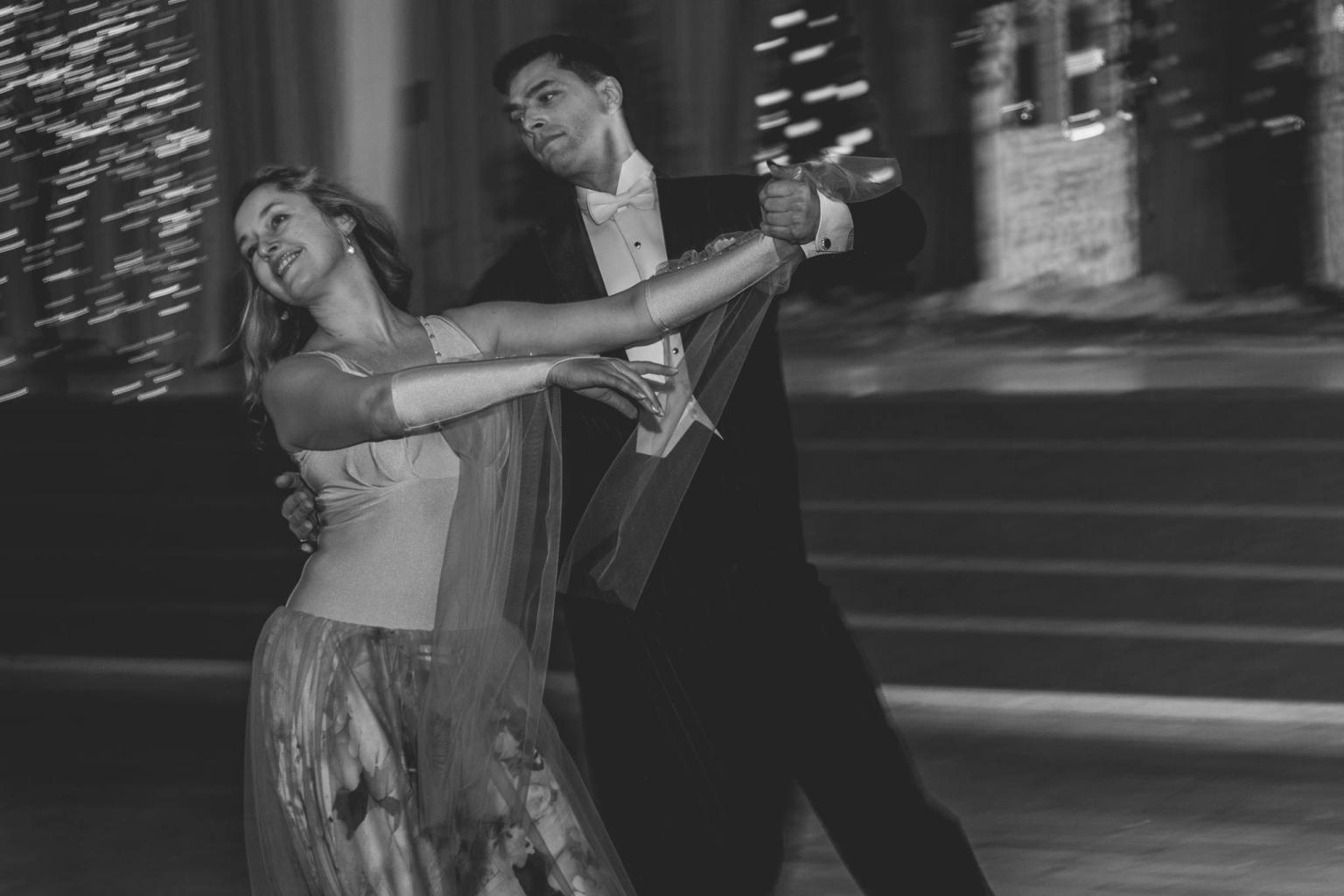
This year's performances will include classical waltz and character dance, as well as Latin American dances that exude optimism and joie de vivre, helping people to relax and express themselves in various Latin American dance rhythms.
How are we, Latvians, doing in this area? I recently watched a TV interview with a foreign dancer teaching exotic dances. The journalist asked him whether Latvian women were able to feel the spirit of these dances, and he replied that they were.
Of course!
Because the blood of different nationalities is very mixed, you can get to know yourself better when you start dancing.
You’ll be surprised as to what emotions, temperaments, expressions are hiding inside of you! You just needed a push at the right moment to release it. That is why we include ten dances in the ball from different places around the world. Ballroom dancing has not yet been included in the Olympics, but the energy and power that a person is able to gather inside themselves and express is enormous! I won a 24-hour dance marathon once thanks to this power... That was in 1998 – the first and last time a competition like this has been held in Latvia. I had a wonderful dance partner with whom we endured this challenge through mental power alone. We ended up winning the competition and received a trip to Paris!
The competition was arranged by a Latvian female entrepreneur jointly with the Dancesport Federation under the management of Aigars Svars. It was a serious competition, as the couples who applied had to present health certificates to understand what they were getting into.
And... You agreed to it? You really danced for 24 hours? Did you take any breaks?
Yes, we got breaks. 50 minutes of dancing was followed by 10 minutes for your physical needs. It was up to each dancer to decide how to make use of this time. Of course, we would have a drink – water and a vitamin drink.
We had practically no food for 24 hours, except for the energy bars that were provided for us. We danced and danced!
We were offered curd snacks, which I love so much, but I didn't have any, because I used smart tactics in the competition and my in-depth understanding of yoga to endure the pressure. I practise yoga and I knew how to use the ten minutes I was given for harmonious, powerfully restorative relaxation in the absence of sleep or the ability to take a break for several hours - this is a deep knowledge. But this was my first experience, my first real deep practical discovery of how strong you can be as a human being and how you can prove yourself through dance.
In our dance lessons, we also do relaxation exercises at the end, and warm-up exercises at the beginning. These skills, along with learning to dance, add a lot to a person's life. I really try to pass on everything that I have experienced through myself to my students.
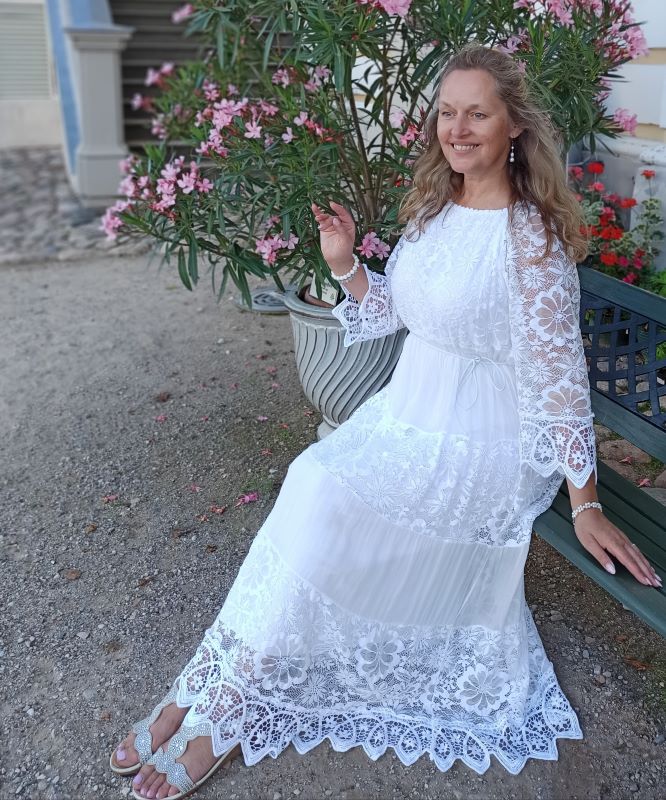
Did you have any breaking points in this 24-hour challenge, or a second wind, like in childbirth where you think you can’t go on, but suddenly get a natural boost of oxytocin?
I don’t think there were any critical moments. My partner and I found the music annoying though! It was very monotonous. The idea of the competition was to excite the spectators, so the SWH DJs preferred club music. If you are not a creative dancer, it is difficult to endure. I quickly realised that only creativity can save us, which is what I told my dance partner. We tried to apply all our skills to whatever music was played – there were no waltzes or tangos there. Every six hours, the best dancers were selected, and for some couples this meant the end of the competition. I believe that we won because of our immense love for dancing, as dancing is not just a rhythm, it’s a way to get your body moving; it has so many levels where you can be one with your essence, and the love, energy flowing through you while dancing, all of that is being transformed though yourself into a beautiful, live work of art. Dancing for 24 hours is not exactly the same as entertaining others with a one-hour dance performance. Of course, there might be a very emotional performance for, like, two minutes, but it is not possible to sustain the same energy for 24 hours.
This creativity is the key. It helps you to move forward, not to lose yourself or your relationship.
Of course, if there are two of you dancing, it’s intimate. Dancing is a very intimate thing in general. It is like a conversation with no words, where you feel something together.
I lost 6kg in those 24 hours. My heart and muscles were exhausted from the strain, but the satisfaction and joy I gained were immense. I have two sons and I know what complete happiness means, because as a mother, I was over the moon when I had my babies and am bearing this beautiful responsibility throughout my life. Winning the dance marathon felt similar to that, which is quite an achievement! During one of the intervals in the marathon, I still managed to nurse my eldest son who was two years old at the time.
I invite you to just dance to begin to feel, discover, and also present yourself more fully and deeply in this world!
I sense that the presence of dance in your life is a lifelong one. You were probably born ‘with dancing shoes on’…
(Laughs) You could say that my children were definitely born with dancing shoes on. As for me, I am probably involved in dance, because, first of all, my mother felt and saw that I can dance, and took me to the folk dance group Dzintariņš at the age of four. Secondly, the Creator whispered very loudly to me that this was to be my life’s calling. At the age of eight, I moved on to dancesport. Selecting talented children was common in those days, in the Soviet Union. Now I plead with society for people to sign their children up for dancing and see how their lives will get settled at an early age. We are all getting lazier, in this age of technologies. Please sign your sons up for dancing, so that the ballroom dance tradition continues.
Dancing requires a lot of energy, but we also increase our intelligence with every kilometre danced.
There are those who grasp movements quickly and are able to create new dance sequences. For others, it takes longer. Is it possible for people to speed this process up?
Yes, dancing balances the brain hemispheres through movement. Previous experience with various sports definitely helps. To learn a new dance or to memorize dance steps, it is important to focus, listen, and then simply go with the flow. Many adults are very influenced by example. If children tend to copy movements more, adults don't have as much free energy, so they have to concentrate to hear the main point and then put the information to use. It all starts with concentration anyway: to hear, fix, see and repeat. And that's where various exercises and methods come in, which I have learnt and use a lot. I have been a teacher since I was 17 years old, for 33 years in total, and I have been dancing for 45! This year, the University congratulated me on my anniversary.
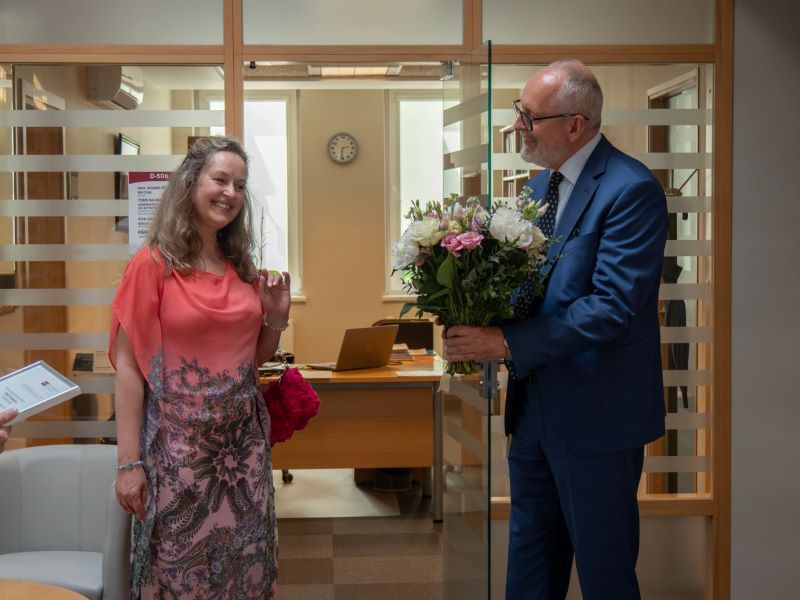
You said that dancing requires a lot of energy. At the same time, dancing also gives energy...
Of course! You receive double the energy and double the satisfaction. The greatest benefit, in my opinion, is the satisfaction of time well spent and how you feel: you feel that all your juices are flowing, your gears are set in motion, it’s all happening! You feel free! Of course, you cannot achieve this feeling at once, as the mind is busy, but we learn to recognise it through this beautiful process. The most important thing is joy, when you feel that you were simply born to dance. Our bodies are so mobile, full of water and an inner fire, and the air makes them light… So we have all we need for dancing within us!
RSU Ballroom Dance Classes
- When: Wednesdays, 20.00-21.15
- Where: in the assembly hall at 9a Kuldīgas iela
The classes are conducted by Evita Pavasare, sports dance coach at the RSU Sports Club
Payment
- Transfer to the University's Swedbank account: LV02HABA0551000376050
- Include text: “Payment for dance classes”




